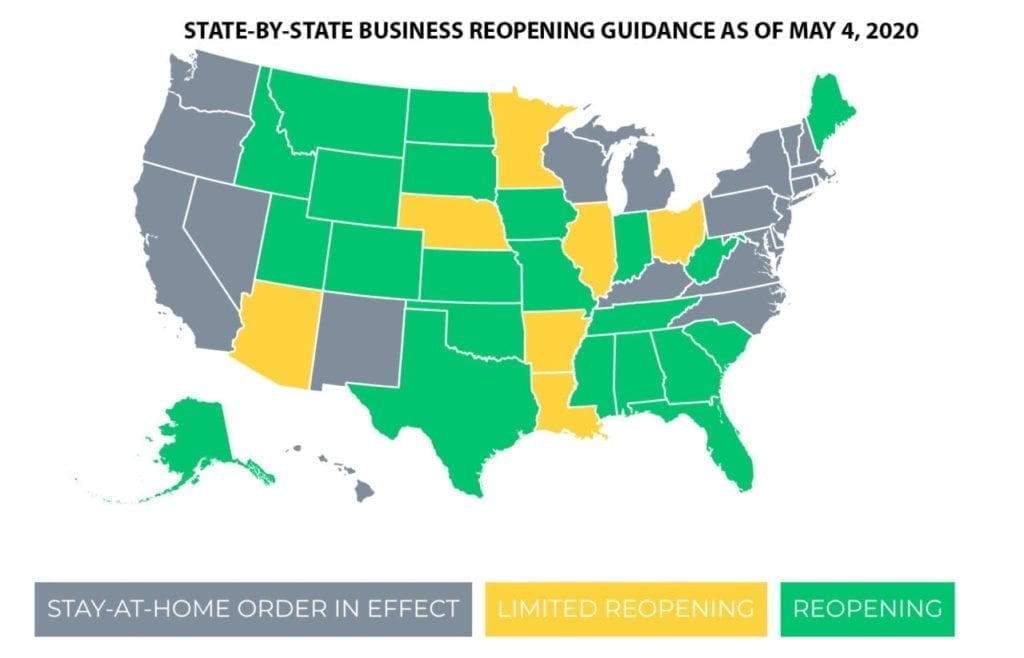Power Sector Council Releases COVID-19 Return-to-Work Guidance
The Electricity Subsector Coordinating Council (ESCC) has released guidance on what the power sector should prioritize as it prepares to shift from remote operations to having employees return to the workplace.
In the seventh version of the “ESCC Resource Guide—Assessing and Mitigating the Novel Coronavirus (COVID-19),” the power industry’s collaborative body identifies four strategic priorities that will help define the next stage in its response to the coronavirus pandemic.
The guidelines could also help other critical industries as they embark on the transition, the ESCC notes. “The electric power industry has an ingrained culture of safety and can offer a unique perspective, as well as planning considerations, that can help promote the safety of our workforce and our customers,” it says.
The CEO-led power sector group, which serves as a liaison with the federal government during emergencies, introduced the guide March 23, and it provides periodic updates sourced from “tiger teams,” which are made up of representatives from investor-owned electric companies, public power utilities, electric cooperatives, independent power producers (IPPs), and other stakeholders. Collating regulatory updates and emerging resources, it serves as a general shareable blueprint for generators, transmission and distribution (T&D) facilities, reliability coordinators, and balancing authorities across the nation on issues the sector is facing as the COVID-19 pandemic endures.
The latest version of the guidance comes as more than half of states in the U.S. have begun to reopen their economies or plan to do so soon, though most fail to meet criteria recommended by the White House.

Return-to-Work Plans Should Be Phased In
The ESCC first urges industry to coordinate plans for returning to the workplace with state/local government, check in with regulators and oversight bodies, and to execute it in phases. Power companies, for example, should understand what information officials will use to begin their economic restart activities. “A phased approach to this process will be required, with the understanding that some business units can continue to rely on telework,” it says. Entities should also consider that school closures and a lack of day care services may also affect an organization’s planning. They should also consider “mental health considerations for the workforce during a potentially challenging transition process.”
Supply Chain Resiliency, PPE Needs Are Crucial
Return-to-work efforts will likely require cultural changes, including adapting the “new normal” of social distancing and enhanced hygiene in office settings and in field/construction work, the ESCC says. “These changes could include physically restructuring office space, schedule rotations, regular health screenings, more frequent cleaning of facilities, and changes in travel policies. In field settings where social distancing is challenging, additional PPE and safety protocols may be required.”
But significantly, it notes challenges faced by industry to fulfill these requirements continue, and they will likely endure over the near-term. Organizations are still scrambling to ensure the resiliency of their supply chains, and they also continue to face demand for personal protective equipment (PPE), COVID-19 tests, thermometers, and cleaning supplies. “The industry will continue to work collaboratively with other critical sectors and suppliers, but also will need the continued support of federal, state, and local government partners to ensure supply chain requirements are filled,” it says.
Still, these requirements are non-negotiable, it suggests. “The ability to maintain a healthy and safe workforce as we re-enter the workplace depends greatly on the ability to ensure the supply of these items to the electric power industry. The reliability and security of the electric system also depends on industry and government working together to ensure these supply chain needs are fully addressed,” it says. “Industry mutual assistance needs currently are being met, but with storm season upon us, these supply chain needs will become even more critical in order for us to keep the lights on.”
Look Out for Technology Challenges, Cyber Threats
The transition from telework to the workplace may increase cyber vulnerabilities both in informational technology (IT) and operational technology (OT) systems, notes the ESCC. “Recognizing these challenges, we will need to continue our partnership with federal intelligence sources, the Department of Energy, Department of Homeland Security, and other relevant agencies to receive timely and actionable communications during the transition process,” it says.
Messaging Will Be Critical
Clear and consistent internal and external messaging will also be important for all aspects of a re-entry plan. Several organizations have already begin developing “comprehensive messaging plans” to engage with key stakeholders, including the workforce and customers. “Messaging should be transparent, easy to understand, consistent, timely, and coordinated with government partners,” it suggests.
The ESCC also notes that it is working with federal entities to develop tools and resources that will support the power sector as they make “independent, localized decisions based on the situations in their communities.” It is also looking into needs for federal assistance to help facilitate re-entry planning. “These requests will be coordinated through the Department of Energy and will have a strong focus on support of the industry’s supply chain (PPE, COVID-19 tests, thermometers, and cleaning supplies) and messaging to state and local government partners that engagement with the electric power industry is critical for economic planning,” it says.
—Sonal Patel is a POWER senior associate editor (@sonalcpatel, @POWERmagazine).